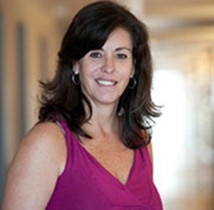Bedford, Nova Scotia might have the highest number of Spanish-speaking people in the Halifax Regional Municipality, but you wouldn’t know it just by walking down the main street.
Sixty five of the almost 1,400 Spanish speakers in the HRM live near Bedford, the highest of any area in the municipality. The number has almost doubled since the last census in 2011, when it was only 35 people.
Magali Dam-Mazzi, acting president of the Latispánica Cultural Association, said that despite the increase, the Spanish-speaking community in Halifax is not united. Mazzi said the majority of people from Latin America come to the city for work and to find a job.
“Most of the people who come from Latin America are middle to low class so they are spread everywhere,” she said. “We don’t also have a big restaurant, there is no community centre that would get us all together.”
Grant Simpson, a fruit seller with a stand on Bedford Highway, said he hasn’t seen the increase in Spanish-speakers in the area first hand. He said he has, however, seen a number of Middle Eastern and Asian people, as well as vacationers.
According to Statistics Canada’s 2016 census, 1,375 people in Halifax said Spanish was their mother tongue, versus 1,135 in 2011. This is an increase of over 21 per cent, higher than the national average, which was just over 12 per cent in the last five years.

Mazzi, who moved to Halifax from Peru 10 years ago, said the goal of Latispánica is to promote Hispanic culture in the city and create a sense of community for newcomers from Latin American countries, like Mexico, Argentina, and Colombia. The organization hosts a fundraising gala every year and holds cooking and dance workshops.
The Hispanic community is stronger in places like Montreal and Ontario, according to Mazzi, who is also a Spanish professor at Dalhousie University. She said one of the reasons for this is the lack of any official presence or consul in Atlantic Canada of a Spanish-speaking country, which can host speakers and events.
“If you go to the embassy [website] in Ottawa you see they do so many beautiful things that really helps to maintain the culture and the roots… But nothing comes here,” she said. “They stay over there. It’s very bad.”
Since the last census in 2011, Spanish was the only European language in Canada that saw growth in the number of speakers. Just over 495,000 people listed it as their mother tongue in 2016, around 55,000 more than in 2011. German fell by almost six percent, while Italian fell by almost seven per cent. Even though it increased, Spanish fell to fifth place among most-spoken immigrant languages –languages other than French and English- in Canada.
Mandarin Chinese saw the most growth, almost 140 per cent in the last five years. It became the most spoken immigrant language in the country with 610,835 people who speak it as their mother tongue. Cantonese, Punjabi, Filipino and Spanish make up the rest of the top five.
Tim Outhit, the city councillor for Bedford, said he hasn’t seen the increase in Spanish-speaking people in the area first-hand, but has seen growth in other ethnic communities in the area. He said one of the reasons for this is relatively affordable housing in the riding.
“You think of Halifax of having a large Arabic and Lebanese and Greek communities but we’re also seeing Indian and African,” he said. “You see growth and diversity in general, which I think is just great.”
